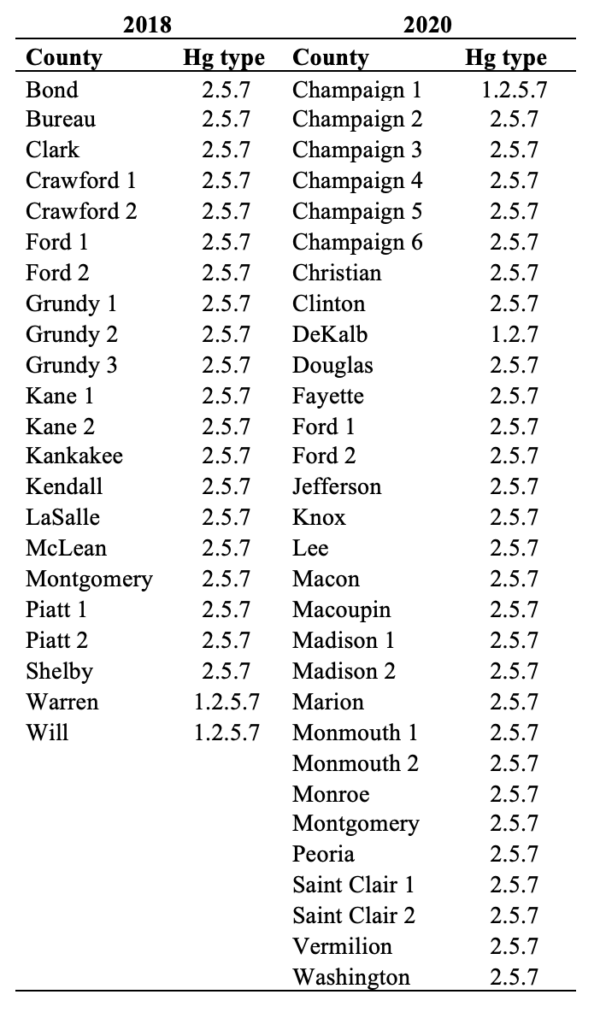Soybean cyst nematodes (SCN) causes more soybean yield loss in Illinois when compared to any other pathogen. For example, in 2021 alone, losses attributed to SCN were estimated at over 14 million bushels, valued at over $185 million. Frequently the effects of SCN go unnoticed, as many of our modern cultivars do not express noticeable aboveground symptoms of infection except under special circumstances. Even when aboveground symptoms are absent, SCN infections can result in losses of approximately 10% if the nematodes are present at sufficient densities. The most efficacious and consistent management of SCN involves rotation of soybean with a non-host crop and the use of SCN-resistant cultivars. This strategy has served us well for many years. However, just like the Bears of the 1980’s and the Bulls of the 1990’s, good things do not last forever.
Research conducted in 2008 indicated that our most common source of SCN resistance, PI88788 (≈96% of the SCN resistance available in our soybeans) was starting to lose efficacy. Why? Think of this as what can happen with some pesticides such as fungicides: The more a pest/pathogen population is exposed to the same pesticide mode of action, the more individuals of the pest/pathogen that can overcome this mode of action survive, reproduce, and produce offspring with the same traits. Over time, the majority of the pest/pathogen population in that area is insensitive to that pesticide mode of action. We have seen this in Illinois with some fungicides, insecticides, and even with Bt traits such as those targeting corn rootworm.
Obviously, if we are potentially losing or will lose more bushels to SCN in Illinois, we want to know this before it becomes a major, widespread issue. To help address this need, we decided to take a look at the overall picture of SCN in Illinois through random soybean field sampling in 2018 and 2020. In this survey, we looked for the overall amount of SCN pressure in fields and also how well SCN could reproduce on different sources of SCN resistance using a special test called an Hg-type test.
We collected samples from 95 fields representing 46 counties across both seasons and recovered SCN in 87% of the fields sampled (Figure 1). Thirty eight percent of fields surveyed contained SCN levels that likely are reducing yields (Table 1). If extrapolated across the state, this equates to roughly 4.4 million acres at a substantial risk for yield loss. We conducted Hg type tests on 52 samples. Of these 100% showed elevated reproduction on the PI88788 resistance source (Table 2).

Table 1. The number of soil samples collected from within Illinois in 2018 and 2020 and their corresponding soybean cyst nematode egg density. Risk levels are derived from Illinois cooperative extension guidelines.

Table 3. The virulence phenotypes for soybean cyst nematode populations collected from Illinois in 2018 and 2020 as determined by Hg type tests. Individual samples are listed by county of origin.

What does this data mean and what can we do? First, this data show that SCN continues to be prevalent in soils and over 1/3 of our acres are likely losing yield each season due to this pest. This is one reason fields should be assessed for SCN pressure at least once every 5 years. Second, our main source of SCN-resistance continues to slip; however, we are still seeing approximately 50-70% control with PI88788, which is very good. This means that we still have some time before this resistance might completely fail; however, if we want to avoid this and associated yield losses, we need more diversity in resistance sources in our soybean cultivars. As with any pesticide or resistance trait- continued use of the same trait results in insensitivity of the pathogen or pest population.
This data was accepted for publication in December 2022 in the journal Plant Health Progress and are currently available as a first look article.
Funding for this work was made possible through the SCN Coalition.
Kleczewski, N., Colgrove, A.L, Harbach, C., Bowman, N.D., and D. Plewa. A survey of soybean cyst nematode population densities and phenotypes in Illinois: 2018 and 2020. Plant Health Progress. doi.org/10.1094/PHP-09-22-0092-S




 and then
and then